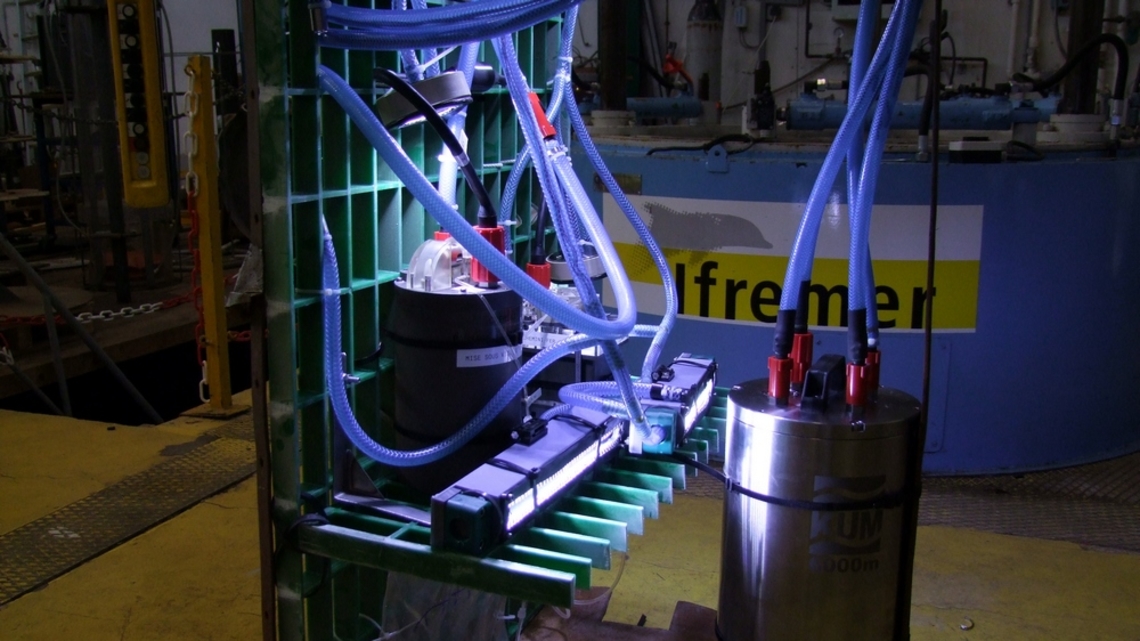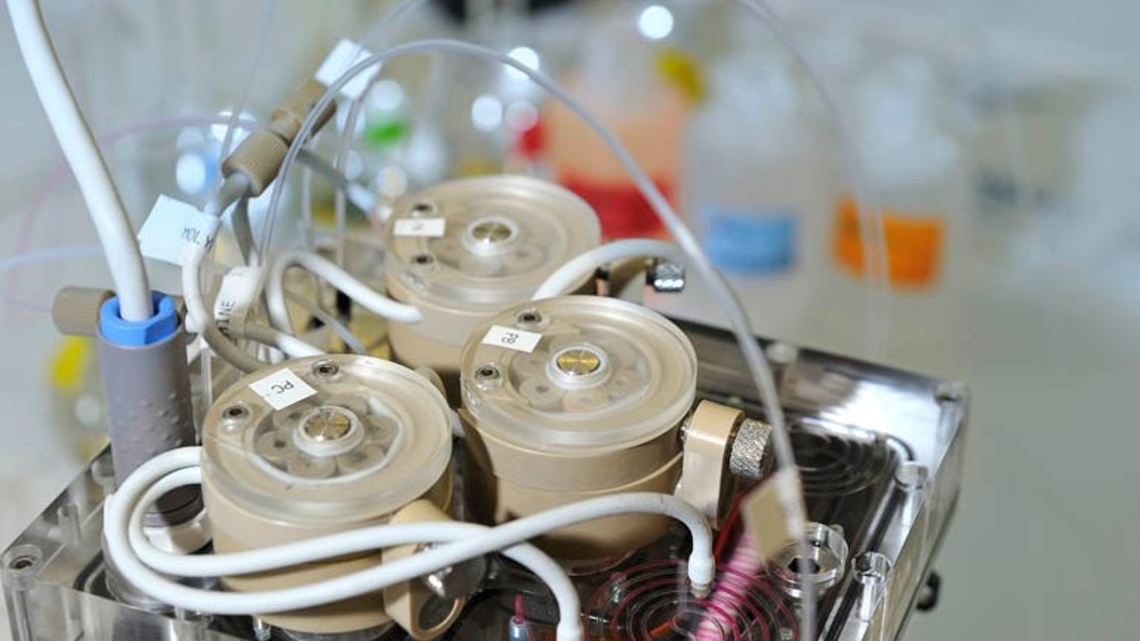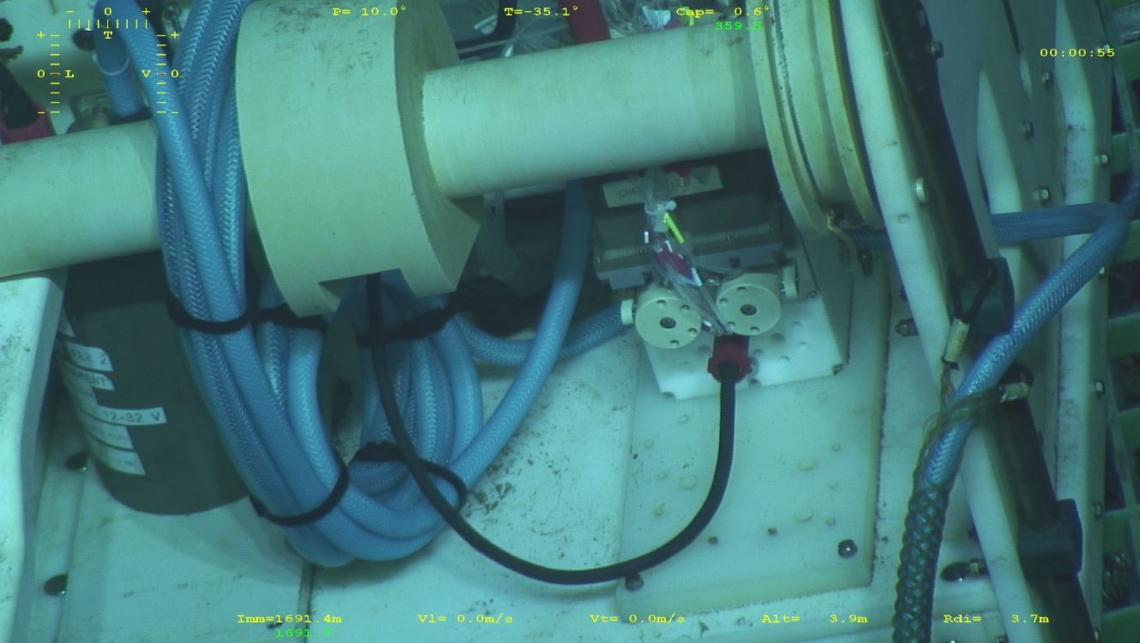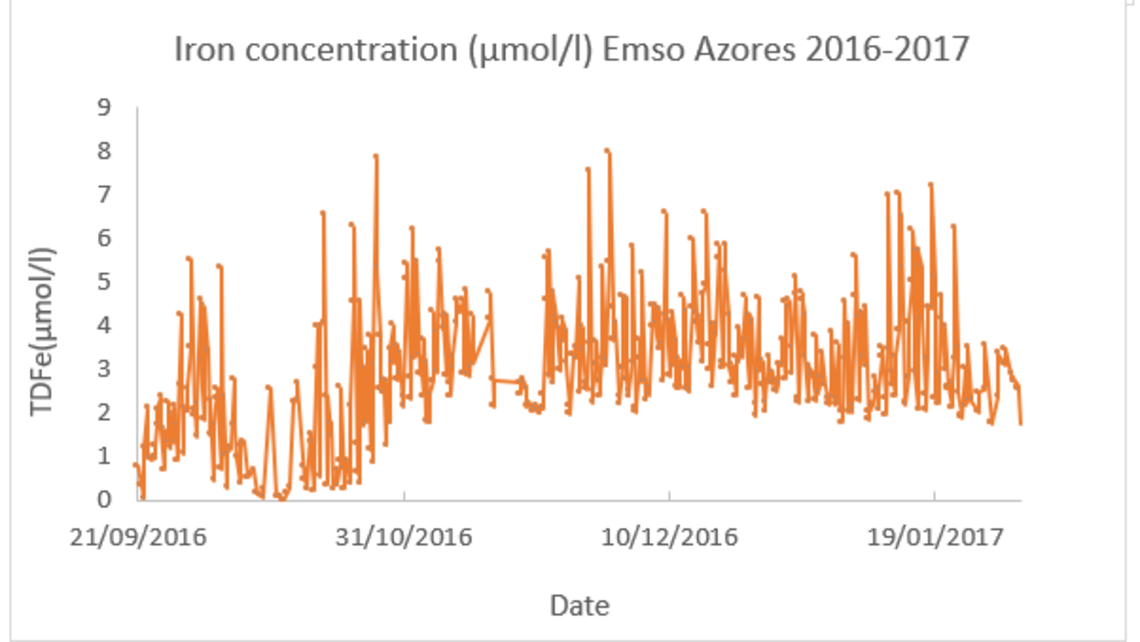AGU2020, Ocean Science Meeting: CHEMINI, Monitoring of nutrients and metals in marine waters
Agathe Laës-Huon1, Romain Davy1, Léna Thomas1, Julien Legrand2, David Le Piver2, Patrick Rousseaux2, Jean-Yves Coail2, Michel Repecaud1, Karenn Bucas1, Cécile Cathalot3, Nicolas Gayet4, Jozée Sarrazin4, Pierre-Marie Sarradin4
- Laboratoire Détection, Capteurs et Mesures (LDCM/RDT), Ifremer, ZI de la Pointe du Diable, CS 10070, 29 280 Plouzané, France
- Service Ingénierie et Instrumentation Marine (SIIM/RDT/REM), Ifremer, ZI de la Pointe du Diable, CS 10070, 29 280 Plouzané, France
- Laboratoire de Cycles Géochimiques (LCG/GM/REM), Ifremer, ZI de la Pointe du Diable, CS 10070, 29280 Plouzané, France
- Laboratoire Environnement Profond (LEP/EEP/REM), Ifremer, ZI de la Pointe du Diable, CS 10070, 29280 Plouzané, France
Surveys of macronutrients and metal concentrations in the ocean waters are crucial to distinguish between natural signature and that linked to anthropogenic perturbation. However, the distribution of these chemical elements vary a lot and episodic events can be missed out if sampling and analysis frequencies are not adequate1. Nowadays the scientific community is trying to identify relevant information about the spatial and temporal distribution of these key chemical species. Acquiring such knowledge requires the use of in situ instrumentation, a serious challenge in the marine environment, as the areas of interest are sometimes difficult to reach and as some chemical concentrations, in particular metals, can be extremely low in seawater2.
Throughout the last 15 years, Ifremer has developed, optimised and operated CHEMINI (CHEmical MINIaturised analyser3), an in situ sensor based on flow injection analysis with fluorescence and colorimetric detection. Our results focus on deployments of the CHEMINI surface version on an oyster nursery station (ammonium, 1 month 2005), a coastal buoy (nitrate, silicate, 7 months 2009, 4 months 2011) and on instrumented benthic chambers (ammonium, nitrate, phosphate, 24H, 2018, 2019). The results are discussed against reference laboratory methods, to provide congruous and comparable data sets.
Deep sea versions of CHEMINI, implemented on various vehicles (31 oceanographic cruises) and seafloor observatories to monitor the variability of iron concentrations close to hydrothermal vents will be discussed in a second time4. An average of 5 months/per year of iron concentrations (4 times/day, 2010-on going) were recorded in the Atlantic Ocean (-1690m EMSO Azores, 5) and while in the Pacific, analyses run for 4 months in 2012 (Ocean Networks Canada, 2190 m 6). Technical and analytical challenges and will be discussed in this presentation.
Contacting Author: Agathe.laes@ifremer.fr
References
- Prien, R. D. The future of chemical in situ sensors. Mar. Chem. 107, 422–432 (2007).
- Grand, M. M. et al. Developing autonomous observing systems for micronutrient trace metals. Front. Mar. Sci.6, 35 (2019).
- Vuillemin, R. et al. CHEMINI: A new in situ CHEmical MINIaturized analyzer. Deep. Res. Part I Oceanogr. Res. Pap.56, 1391–1399 (2009).
- Cotte, L. et al. A comparison of in situ vs. ex situ filtration methods on the assessment of dissolved and particulate metals at hydrothermal vents. Deep. Res. Part I Oceanogr. Res. Pap.105, 186–194 (2015).
- Laes-Huon, A. et al. Long-Term in situ survey of reactive iron concentrations at the Emso-Azores observatory. IEEE J. Ocean. Eng.41, 744–752 (2016).
- Cuvelier, D. et al. Biological and environmental rhythms in (dark) deep-sea hydrothermal ecosystems. Biogeosciences14, 2955–2977 (2017).




